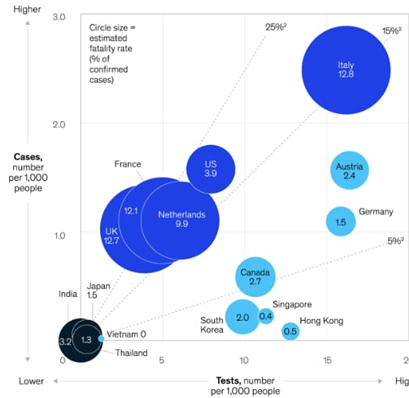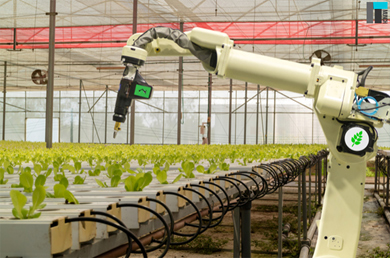As children, as adults, we are taught to live up to expectations. Become one of the millions of people who endeavour to put the shambles of their life into a meaningful picture, all the time referring to the book of rules. Dreams that keep entwining our mind through childhood are labelled as “too big” by the world and eventually by ourselves. We apply the identical standards, identical expectations, and identical meanings to each one of our lives. Hardly ever, are we told that we have a consign in the world that is uniquely ours. You see a locked door and never realise that you can always look through the keyhole at a different angle and who knows, you might be able to unlock the door eventually.
Trekking the mountains was something like a locked door. I frequently used to travel to the mountains as a child and the dream to trek kept fascinating each time. A chase to infinity just to feel the liberty that gushes into, like the flowing mountain streams releasing the spirit to break through whatever may come. With the enthralment of the word “trekking” and with
some childhood allure to climb heights I started to hike. The first ever in my life Sandakaphu (3636m), the highest climb in West Bengal was real tough with several technical, physical hurdles on the way, the first trek entangled with the love of near and dear ones, a family eagerly awaiting your early return made it nearly impossible for me. Each day the climb became even tougher than it seemed to be! Although not a successful one, the entire trek and its incompleteness has encroached life time values, to be cherished forever. Everything on earth is mortal except your own experiences. Priority will change but your achievements will draw a smile in your face forever and meeting failure turns the curve upside down!
How to prepare?
Trekking is real fun but in the same time it becomes hard-hitting job, to cherish the scenic beauty around while gasping for air! Be motivated; start early as much as you can. Once set with the plan keep close control over your diet along with a rigorous exercise habit, no suggestion, no medicine can help you help you reach your dream destination other than this
self help. Start with brisk walking and try completing 4kms walk within at least 30 minutes. Try some squats at home and practice deep breathing. Try step climbing while at home and practice exercises to enhance cardio vascular endurance. Climbing heights comes with hazards like breathing shortness, vomiting, head ache, acute flu. Easier said than done a detail
analysis about the elevation will help you prepare physically. Start accordingly, remember even baby steps can go a long way. You may find it hard to climb a 15 feet slope but wait, check around if there are stairs on the way. Don’t keep trying to get on the slope and sliding all way downwards. Rather take your time. Climb each step; feel the journey; make memories
and nobody can really stop you from reaching the top!! Pre physical condition monitoring is just a kick start to the wonderful experience.
What to pack in the Rucksack?
Remember to pack in your own innovative way! Hikers should restrict themselves from exceeding the 15kg limit on personal luggage.
- Clothing Section must have pair of trekking pant, thermal innerwear, light weight jackets, short sleeved t-shirts (Opt quick dry ones), one full sleeved trekking shirt, Sleeping pants, quick drying towel. innerwear, minimum 3 pairs of socks and Hiking shoes. Trek specific requirement like rain quancho, river shoes, etc varies according to itinerary of the trek and varying trekking conditions.
- Gadget section must have a torch (headlight if required), phone chargers, powerbank, memory card and extra batteries. Passionate photographers need to accommodate their camera and lenses as well.
- Sunscreen, hat, hand and toilet sanitizer, paper soaps, tooth brush, tooth paste, toilet paper are must have items for the toiletries section
- Other items shall include trekking stick, water bottle, thermal bottle, sleeping bag liners, dry food containers, etc.
Watch out for provisions to leave the extra baggage at your stay so that you can hike only with a small daysack. Fill the daysack with some of the important items only that might be required before the next base camp.
Do I need Medicines?
Oh yeah! Definitely. But yes at the same time don’t start living on them until and unless advised by a doctor. For being in the safe zone, don’t try out extreme altitude trek above 5400m until you become a real experienced trekker. High altitude medical problems are real tough to be attended immediately. Start with very small elevations and your own medical kit
may find a little use! Pack some band aids, paracetmol, aspirin, stomach antibiotics, amoxicillin, rehydration packs and pain relief gel. Take proper guidance from a medical practitioner before consuming Acetazolamide drugs highly used to combat high altitude sickness.
Remember trekking comes along with potential health hazards too especially at very high altitudes one can have Acute Mountain Sickness (AMS), High Altitude Pulmonary Oedema (HAPE), High Altitude Cerebral Oedema (HACE). Proper Acclimatization serves the purpose to keep these at bay. Before planning for high ascends remember to perform a quick
research on the symptoms and their after-effects.
What I need to know about the term “acclimatization”?
Take time and Soak- in! To acclimatize is to let your body slowly mould into accepting the new environment. A thumb rule says that you should not generally ascend more than 300 metres per day and keep a day off for each 1000 metres ascend. You need to get in-tune with the changing environment. Maintain a slow pace while walking to allow your body enough time to adjust with the changing heights and weather conditions. Breathe gently through your nose to control the pace and keep rehydrating yourself. Maintain proper diet and include carbohydrate as much as possible. Energy is what you will require all through.
Over and above learn by heart to embrace your own stance to settle on your extent. Believe that all beautiful feelings of the world are real tough to achieve. There’s nothing called easy trek, everything lies in the mind including your strength to rise above any hurdle. Keep exploring and trying pushing your limits harder than ever. Though my first elevation gain of 3636m remained incomplete, I happily completed scaling 4633m the very next year. So don’t lose hope with failure rather plan wisely.
Happy Trekking!
Suggested Read:
• http://www.natgeotraveller.in/trekking-guide-expert-tips-on-how-to-pick-a-trail-pack-prepfor-any-terrain/
• https://devilonwheels.com/trekking-in-himalayas-comprehensive-guide/










